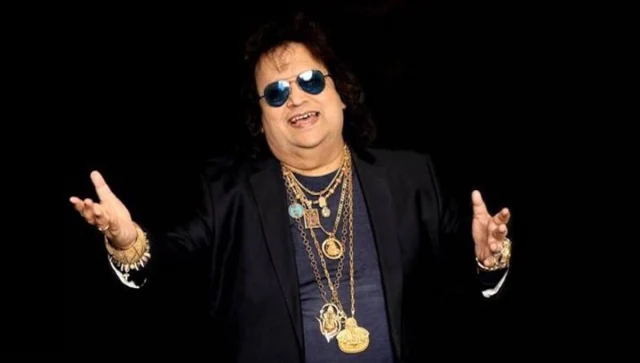MEDIA
Bappi Lahiri, often mimicked and taken less seriously owing to his quirks, gave India a new sound
www.firstpost.com | February 16, 2022
Some might object to Bappi Lahiri's music being referred to as an ‘aesthetic,' thinking that aesthetic is only for highbrow songs. Why do we deride joy so much? Is joy not an integral part of the listening experience?
We often hear that mimicry is the best form of flattery. I cannot think of another Indian musician as widely mimicked [often in a derisive way] as Bappi Lahiri.
Most of these mimics focused on his love for jewelry, sunglasses, sartorial taste, body shape, and a few disco songs that made him popular while overlooking the other corpus of his work which is very non-disco in sound and orientation. 'Aao Tumhe Chand Pe Le Jaye' immediately comes to mind. This mimicry created a distinct figure and appeal for Bappi Lahiri, who frequently appeared on television, seemed jovial, and let others have a hearty laugh at his expense.
Even during award functions and other felicitations, several videos of which are online, the host is seen cracking a joke while Lahiri is on stage to receive the award. The audience immediately bursts into laughter. Like many things which are routinely turned into a formula by the Hindi film industry, the treatment of Lahiri and his depiction on Hindi popular media also became formulaic diminishing all attempts to examine his legacy beyond disco music with some seriousness.
This depiction however made him enormously popular to such an extent that barely there was a music reality show in recent times that did not feature Lahiri as a judge or dedicate special episodes to his music. I think Lahiri cared very little for his mimics. Perhaps he enjoyed the attention that catapulted him into a popular culture figure. To such an extent, that children would dress as Bappi Lahiri in fancy dress competitions. I do not know if Lahiri was ever asked if all this attention or his depiction in popular media ever bothered him — the attempt to constantly think of a musician through his appearance and a selection of his disco songs. To me, it often felt very crude and insensitive. Lahiri, however, spoke freely about his love for gold, and how he felt it was lucky for him.
There is no disregarding the fact that Bappi Lahiri introduced a new sound to Hindi film music and gave it a new aesthetic. Some might object to the use of the word ‘aesthetic’ here thinking that aesthetic is only for highbrow songs. Whether you like them or not, you cannot ignore the era of disco music ushered by Bappi Lahiri, and the very different voices that he got to Hindi film playback – Sharon Prabhakar and Nazia Hassan amongst many others. Whether these songs deserve serious critical or academic attention is another debate altogether. But they are part of popular Hindi cinema history and speak for the aspirations of the urban middle class in a pre-liberalisation India.
It must also be said that when Bappi Lahiri arrived in Mumbai, the undisputed king of Hindi film music was RD Burman. Lahiri faced stiff competition, and yet carved a niche for himself. Perhaps disco music helped to create that space for Lahiri. It gave him success and the confidence to experiment. Can we think of Mithun Chakraborty without Bappi Lahiri and disco? Lahiri’s music deserves more credit for the phenomenal rise of Chakraborty, who became a mainstream film star fully using the conventions of mainstream song-and-dance routine in Hindi films.
I do not want to imply that Lahiri did not make bad songs but can you think of an artist who has only produced masterly work? Also these songs still remain popular. Why do we deride joy so much? Is joy not an integral part of the listening experience?
Lahiri gradually transitioned into a popular culture figure, and owing to these reasons, he was still used for playback singing in contemporary films. Even AR Rahman used his vocals in Guru. Having said that, a lot is said about his pronunciation and inability to speak correct Hindi in spite of a lifetime spent in composing Hindi film songs.
These criticisms were not unknown to Lahiri but he did not conform to a standard utterance or rendition of the language. After all, language is an expression of both emotional and cultural registers. He often said gaan instead of gaana, the Hindi word for song. Gaan, in Bangla, means song. This too was picked upon by his mimics. Gaan or gaana, the moot point remains the same and Lahiri remained unfazed, till the end.
-Prof. Kunal Ray, Assistant Professor – English Literature.

